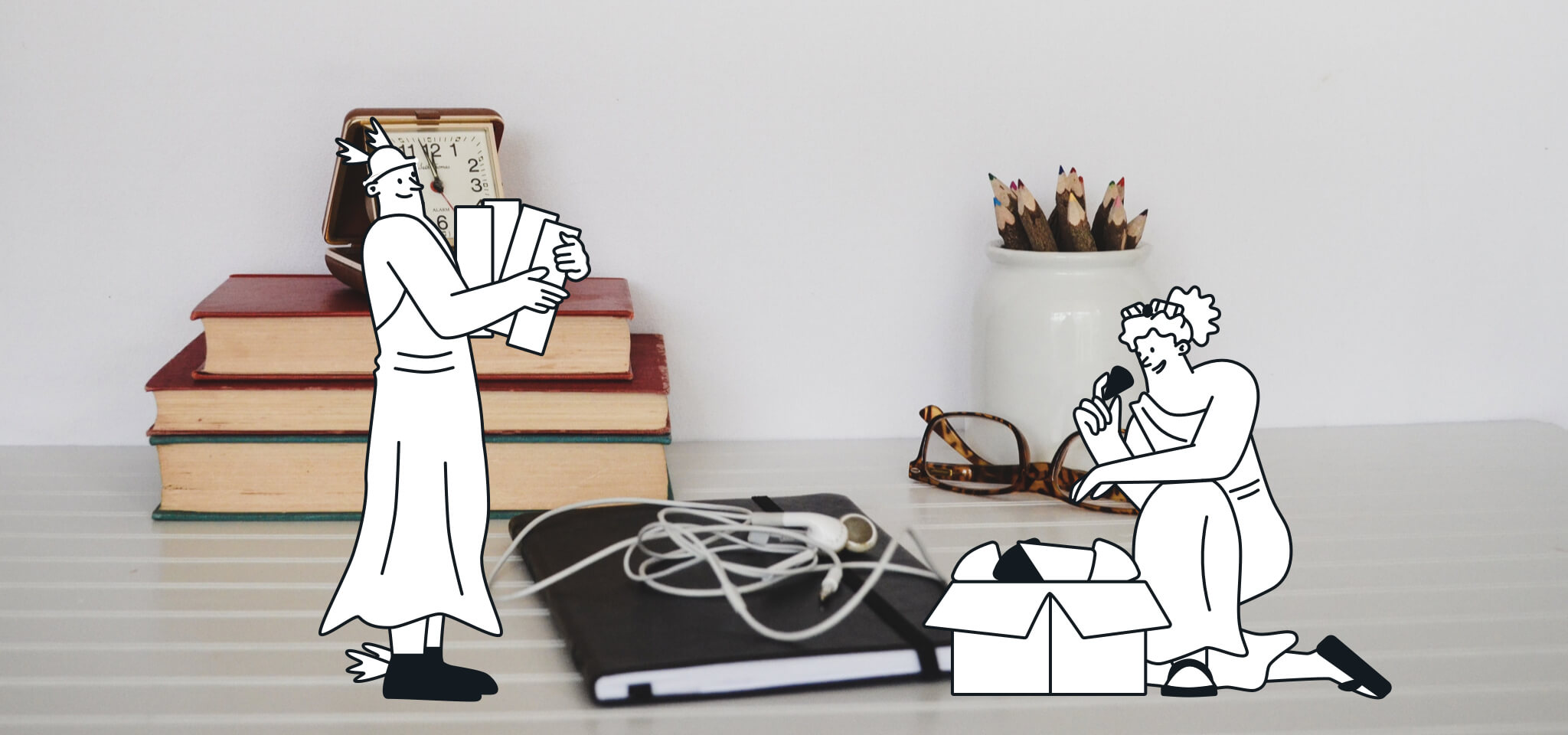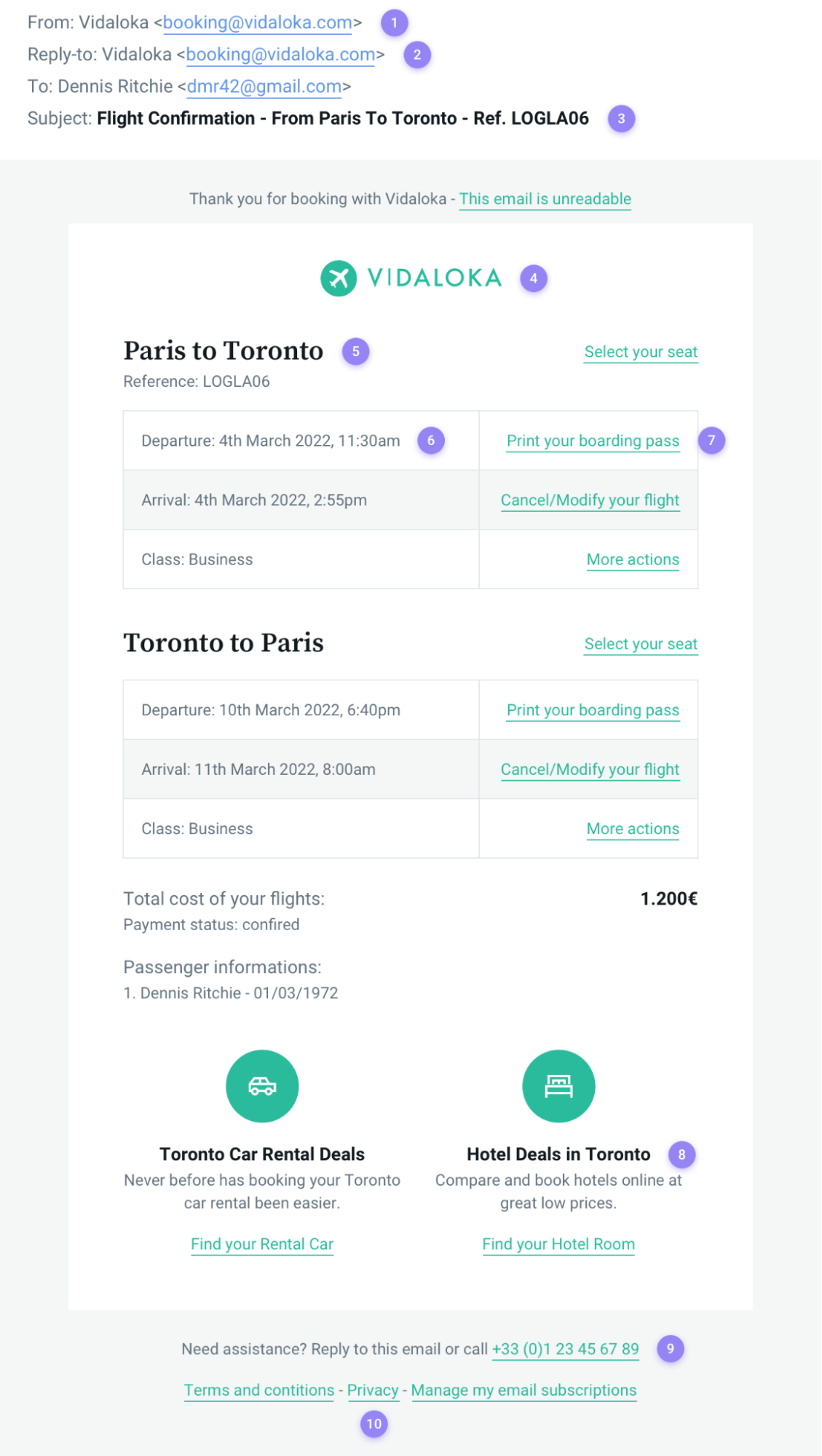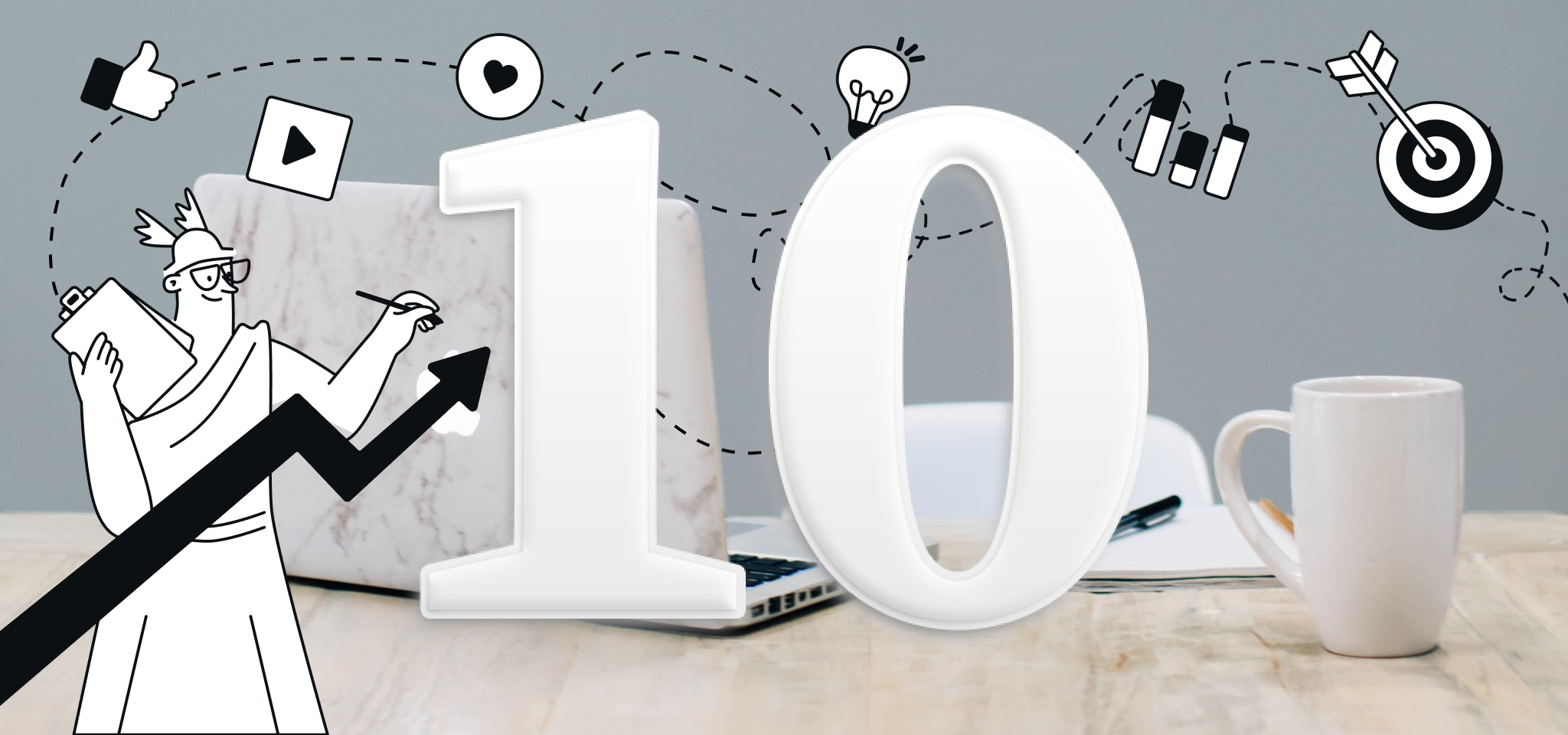Email Best Practices
The 7 best templates for a successful transactional email strategy
An effective transactional email strategy will boost sales and improve brand loyalty. Here are seven templates to bolster a successful strategy.

PUBLISHED ON
In transactional and marketing emails, information hierarchy is crucial. The information it contains is paramount to your audience, whether your email is an alert, notification, or confirmation.
But sending a clear, well-written email is only effective if you know what you’re trying to say. A transactional email is an interaction between you and your customer, and thus, it’s meaningful. Just because these emails use templates is no excuse not to convey your company’s vision authentically and inspire the next purchase.
Read on for our tips on crafting effective transactional email templates and seven common examples that can help grow and maintain your client base.
Table of content
Structure of a transactional email
1. Double opt-in email
2. Password reset email
3. Confirmation email
4. Notification email
5. Invoice email
6. Reminder email
7. “Thank you” email
1. Focus on customer experience
2. Personalize the content
3. Include a CTA
Forgetting to cross-sell or upsell
Using boilerplate language
Writing vague subject lines
Give yourself praise, graciously
What is a transactional email?
Put simply, transactional emails are automated emails sent in real-time to the users following a specific action (also known as triggers). When someone performs an action on your website, like purchasing a product or signing up for your email newsletter, they’ll receive a transactional email.
Two characteristics distinguish a transactional email from promotional emails or marketing emails. Transactional emails inform recipients about non-promotional topics and generally don’t require the reader’s permission to send. That’s vastly different from email marketing which requires subscribers to opt in.
Structure of a transactional email
It’s critical to structure transactional information to highlight the components with the highest value to ensure deliverability. (Here’s more on designing HTML templates for transactional emails.) Similarly, your email message should also offer all the tools related to this information. It should be possible to learn more, cancel an action, or unsubscribe altogether.
Take a look at our analysis of the transactional email example below:

Sender: The sender must be immediately identifiable.
2. Reply-to: It’s considerate to offer the recipient a way to respond directly to the email, especially since it is becoming increasingly common for companies to use no-reply@company.com or donotreply@company.com in this email field.
3. Email subject: The recipient should be able to read the subject line and know the email message’s topic. Try including the most pertinent information in 25-30 characters.
4. Header: This should reinforce the sender’s identity but should not take up too much space. Have room available for the primary email content.
5. Main information: The reason the recipient has received the email should be bold or highlighted and placed near the top.
6. Detailed information: This should be less prominent than the leading information but long enough to reassure the recipient or provide additional information pertinent to the email’s subject.
7. Tools related to the transaction: The most frequently used actions (modification, cancellation, etc.) should be found easily within the email. Use links that will take the recipient directly to the relevant web page.
8. Marketing or promotional content: This content's position should be below the information related to the transaction and include a link. Specialists recommend that marketing content not exceed 20% of the transactional email.(Note: even with included promotional links, the intent of your email is not to market to the reader but to provide information related to what triggered the message.)
9. Contact information: Don’t forget to supply your contact information, especially if the email confirms a purchase.
10. Private information: As in all communication, the client should feel comfortable with your use of their personal information.
Commonly used transactional email templates
There are a host of email templates to use for transactional messages. Here are seven of the most common types and suggestions for using them. Keep in mind whether it's easy for your clients to figure out why they’re receiving the email. Use buttons with direct links to the actions or information your clients need.
Using different types of transactional emails is a great way to invite your customers to explore other products or services you offer. With few exceptions, these emails are read in their entirety or, at the very least, scanned thoroughly.
1. Double opt-in email
Curating a solid email subscriber list is crucial for effective marketing campaigns. Ensure your subscribers truly want to be part of your tribe by requiring one more step in the subscription journey. Typically, double opt-ins require the subscriber to verify their email address, thus indicating an “above average” interest in what you’re offering.
With double opt-in email messages, we recommend inviting the recipient to confirm their subscription by clicking an opt-in link or button.
2. Password reset email
These typical transactional messages give simple instructions or reminders to reset expired or forgotten passwords. An effective password reset email will allow customers to update or change their passwords and login info.
With this template, be sure to clearly explain they received the email because they requested to reset their password and include simple instructions with a link or a call-to-action button to do so.
3. Confirmation email
These emails have the highest open rate. Not only that, but people tend to read them thoroughly. They’re typically used for order confirmations or shipping confirmations but can also be used to verify a reservation or another exchange. Ecommerce businesses can use confirmation emails to upsell or cross-sell to their customers.
The key components of a confirmation email assure your customer you received their order, provide an itemized summary of their purchases, and offer a means to check or modify their order (usually via a specific CTA button or link).
4. Notification email
Notifications show progression, like an order's delivery status. You can also send a notification email to verify account creation or share updated customer information, terms of service, security, or privacy notices. Notification emails can also include welcome emails and abandoned cart emails.
Three components that notification emails often include are confirmation of the status change, details regarding the change, and links to verify and track the order.
5. Invoice email
Sending invoices is essential for getting paid, but businesses often don’t consider that these are also transactional emails.
When emailing invoices, we recommend keeping them as simple as possible by including only the essential details (invoice number, date, items, and the total amount due) and using a call-to-action (CTA) button to encourage immediate payment. Also, you might consider automatically generating invoices to ensure timely delivery for recurring orders.
6. Reminder email
The reminder is a particular type of email used to nudge your customer. Typical reminders include renewing a subscription, refilling a prescription, or using a loyalty card.
If you’re using this email design, be sure to:
Include the reason for the reminder: “Hey, your subscription is about to expire!”
Remedy the situation: Renew today by clicking here”
Give an incentive to take action: “Renew before the 30th and save 15%!”
7. “Thank you” email
Like Mom always said, never forget to say “please” and “thank you”. The latter is especially important with your customers, whom you can never thank enough. Thank them for signing up. Thank them for their purchase. Thank them for returning. Thank them for reviewing your business. Thank them like there’s no tomorrow.
These are, by far, our favorite transactional emails. They allow us to show our clients our appreciation and gratitude.
When using a “thank you” email template, always be personal (address your customer by their name), be sincere with your words, and be direct about wanting to continue the relationship by including CTAs with exclusive discounts and promotional offers.
What you should do when sending transactional emails
Here are three important things to keep in mind when sending any type of transactional email to your clients:
1. Focus on customer experience
Your emails need to be customer-focused, easy to read, and straightforward. The user should very quickly identify who’s sending the email and why. Lastly, customers must be able to execute the required or requested action efficiently.
2. Personalize the content
Because transactional messages follow a triggered event executed via an email API, like signing up for a newsletter or purchasing a product, take the time to make it personal. Use the name fields to auto-populate your customers’ names and connect the content to the action taken. Address their individual needs. And summarize their status or history with your company.
3. Include a CTA
When sending a notification to your clients’ inboxes, always provide a way for them to take action. Use buttons with links directly to the webpage where they need to act. Don’t beat around the bush. Honor that you value your clients’ time and be straightforward with information and requests.
What you need to avoid in a transactional email
Just as important as knowing what to include is knowing what to avoid. Of course, leave out the heavy sales pitch. But other pitfalls to avoid include:
Forgetting to cross-sell or upsell
Customer interactions trigger transactional emails. It has the highest open and click-through rate of any email. While being pushy is a no-no, upselling or cross-selling is not. Be authentic and encourage your customers to consider other products or services that complement or assist their initial interest.
Using boilerplate language
Personalize your message to your client. Remember, this client has taken action – that’s what initially triggered the email. Nurture that relationship by personalizing your content. Use auto-populating features to extract the information you need for that personal touch.
Writing vague subject lines
Your subject line should tell the reader what they need to know about your email. For instance, if you’re sending a confirmation email, don’t write “confirmation email.” Tell the recipient exactly what they’re getting. Try using, “Course confirmation: Passive Income Strategies” in your subject line instead.
Give yourself praise, graciously
Your client came to you. They interacted with your website, landing page, or social media. They’re already interested in what you offer. Now’s the time to include information about your podcast, your blog, or the extras that make what they already want sparkle. So go ahead, tell the world how great you are! Just keep it classy and do so graciously and with style.
As with any communication, create value for your client by employing email best practices. Avoid spamming or being pushy.
Transactional emails are a great way to keep your clients in the loop and introduce them to your brand. They should be an integral part of your email campaign strategy. Just keep it simple.
Have any more email content you consider crucial information? Let us know on Twitter and tag us on Instagram!
Related readings
Popular posts

Top email marketing trends for 2022
To the outsiders, it can sometimes feel like email hasn't changed that much since it was created. Maybe this is why some are so persistent in...
Read more

Reducing email’s carbon footprint
When it comes to protecting our planet, every step toward cleaner practices – small and big – counts. So, what if we told you that emailing, as clean and green as it seems...
Read more

Marketing calendar 2024: Dates you shouldn’t miss this year
We finally got through 2023 (phew!) and Q1 is just around the corner. It’s time for you to start scribbling down your New Year’s Resolutions to make sure we start the year with a bang. If you’ve found your way here, we’re guessing that’s because creating a winning...
Read more



